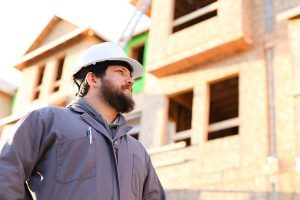If 2020 has reminded us of anything, it’s that necessity is the mother of invention. Back during the housing crisis, fewer homeowners wanted or expected a home office. Now, with a historic share of people working from home, home offices (or more accurately, spaces dedicated to work) are essential features. It’s unlikely that the demand for home offices will go away anytime soon. Why should builders care about this change, and what can you do to capitalize?
Why Builders Should Care About the Home Office Renaissance
For years, home officers were a luxury for homeowners. But the COVID-19 pandemic showed that having a space dedicated to work was something homeowners absolutely needed. And overall, experts tend to agree that working from home isn’t something that’s going to disappear when the pandemic passes. This makes home offices even more important.
- According to studies from the Atlanta Fed/Chicago Booth/Stanford Survey of Business Uncertainty, many firms expect the share of working days that full-time employees spend working from home to triple compared to before the pandemic.
- Further, Willis Towers Watson anticipates that 42 million people—“just under a third of the American workforce”—will work from home at least 2–3 days a week by the end of 2021. Before the pandemic, only about 5 million people did so.
Simply put, more people will be working from home permanently in the coming years.
Anecdotally, we’ve all seen what working from home without a dedicated space looks like. Family members barging in on Zoom calls. Kitchen tables converted to workspaces. Workers sequestering themselves in poorly lit basements. Without a dedicated workspace, people may find it harder to get work done. Even worse, they may find that they associate rooms they used to enjoy with work, which makes them like that room less.
Between necessity, desire, and striving to maintain a barrier between work and home, homeowners want home-office space. Builders who can look ahead and provide it will stay ahead of this rapidly developing curve. What can you do to capitalize?
Indoor Home Offices Are Essential and Will Be for a Long Time
The most direct way to capitalize on the desire for home offices is to provide spaces for home offices. This is especially true when building homes for millennial prospects. You likely know that millennials make up the largest share of home buyers currently. But did you know that one of the things they look for in a home is “dedicated specialty rooms, like game rooms, exercise rooms, and media rooms”? The desire for more space didn’t begin during the pandemic. The pandemic only magnified it.
So, what does an ideal space for a home office look like? According to Robyn Friedman, it may include some of the following aspects.
- Cool or natural lighting with lots of outlets. Very few people want to work in a dungeon. If the houses you build place home-office space near an exterior wall, be sure it has windows to allow natural light in. Skylights are another good option to let the light in. If you build home-office space more toward the interior, consider using cooler, bluer lights, which are proven to increase productivity. And of course, include an abundance of outlets for lamps, computers, phone chargers, printers, and more.
- Keep it comfy yet professional. Although it’s a room in the home, a home office should focus on work. Including space for ergonomically sound furniture, plants, and pictures is one way to make the room comfy. Soft and sleek color palettes are an easy way to make the room look professional.
You Build it, We'll back you up.
Learn why so many builders enroll their homes in the 2-10 New Home Warranty Program.
Outdoor or Detached Home Offices Are Growing in Popularity
A more recent trend has been the concept of an outdoor home office. Once again, though the COVID-19 pandemic magnified it, outdoor space has long been a desire for the newest generation of home buyers. Considering that many people feel cooped up in their houses, combining the desire for a home office and outdoor space makes a lot of sense.
Here are a couple keys if you and your potential buyers want to be ambitious about outdoor workspaces.
- Make it seamless to move from outside to inside. Openness and ease of access are important to many buyers. And this is especially important for younger buyers. The easier it is to get to an outdoor workspace, the more likely homeowners are to use it.
- Be(e) smart about landscaping. You’ll need to carefully consider how you landscape around outdoor home offices. You want to provide enough foliage and greenery to make the space truly outdoorsy. However, you don’t want to inundate homeowners with wildlife like bees, squirrels, and flies.

Fulfilling the Demand for a Structural Warranty
The re-emergence of home offices is a great way to add value to the houses you’ll build in the future. In the same vein of fulfilling a huge demand and adding value, consider covering all the homes you build with a structural warranty administered by 2-10 Home Buyers Warranty (2-10).
- 94% of prospective home buyers are more likely to purchase a new home from a builder that offers a structural warranty.
- 4 of 5 buyers value a third-party, insurance-backed structural warranty.
Similar to home offices, the demand among homeowners for a structural warranty is extremely high. As the industry leader in structural warranty administration, 2-10 can help you provide what your prospects want. Fulfilling this demand, along with providing space for home offices, is an excellent way to differentiate yourself and build trust among your prospects.








